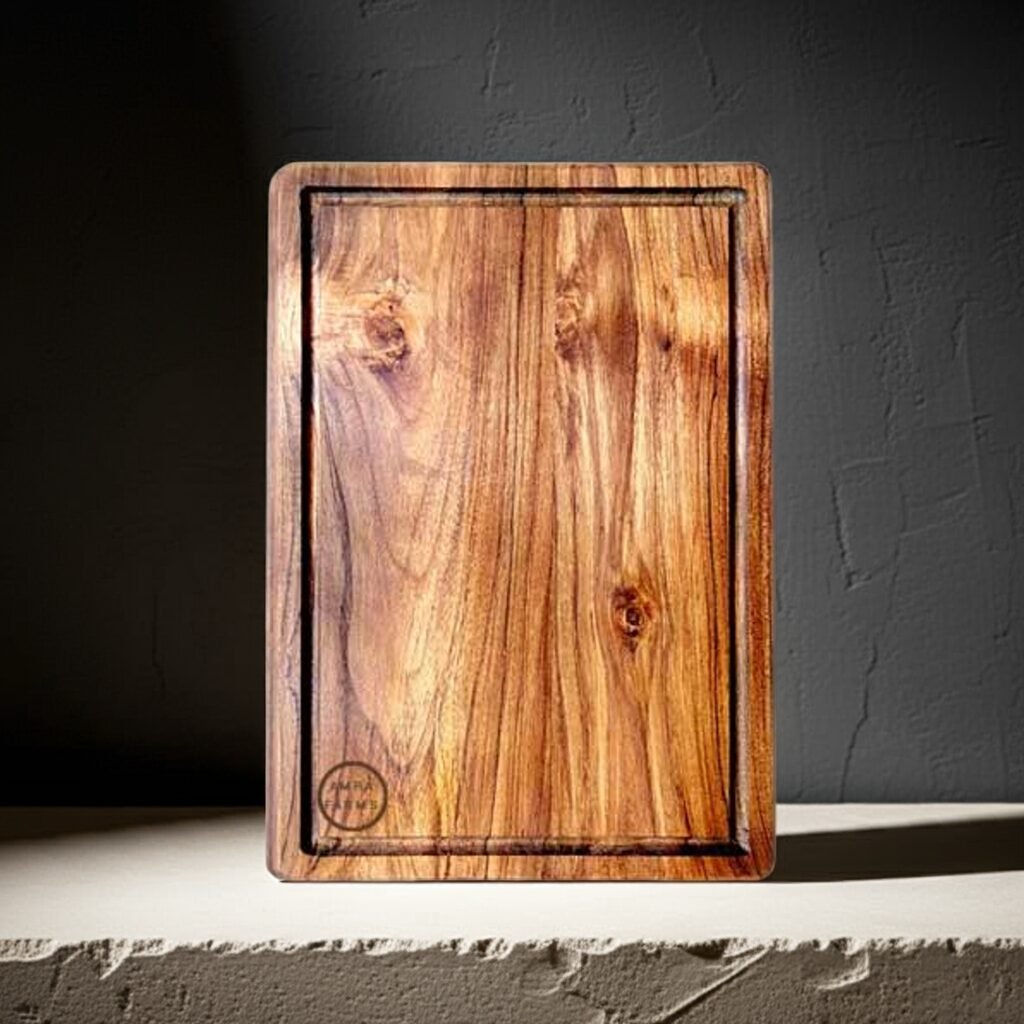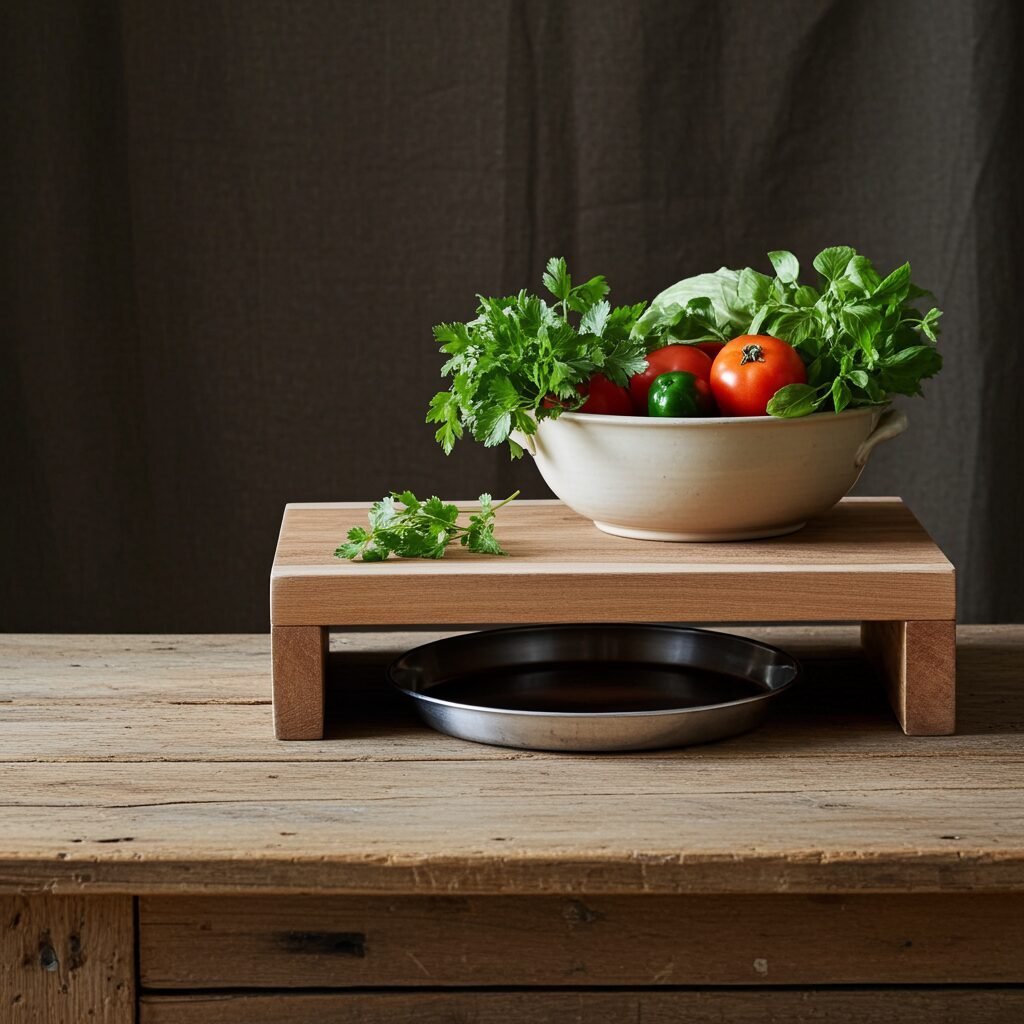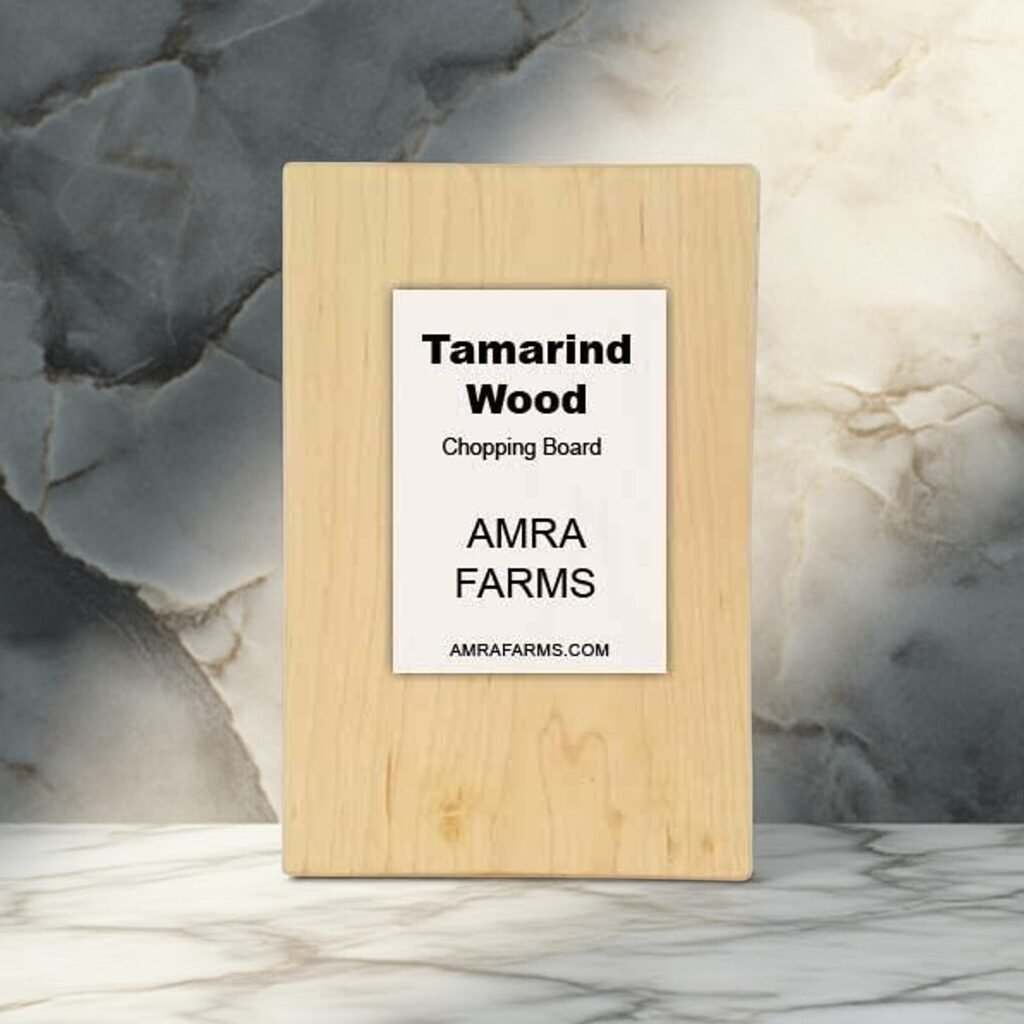Your cart is currently empty!
Which Wood is Best for Chopping Boards? A Guide for Indian Kitchens
Wooden chopping boards are an integral part of all Indian kitchens. While plastic boards have become popular, many users find them dirty over time and irreparable, beyond use in just years. The fear of microplastics in food is also a concern to many users. Steel and glass chopping boards are relatively better, cheaper, and easily accessible than plastic boards but come with their own flaws. While wooden chopping boards are still the favourites, the right wood is often a matter of concern.






Choosing the right wood for your chopping boards impacts food hygiene, longevity of the board, and the sharpness of your knives and blades. The wrong material could cause more harm than good to your home and kitchen. Some woods are known to absorb moisture, breed bacteria, mold, and fungus, or dull out your knives. This article explains the most common wood varieties available in India for chopping boards and their pros and cons.
Factors to Consider When Choosing Wood for Chopping Boards
We select the right kinds of wood for our chopping boards. A typical chopping board wood requires to be in the range of 900-1500 in Janka rating, naturally antibacterial, untreated, and moisture-resistant. While some woods do have a few of these qualities and work well in some regions, they may not work well in others. Mango wood, for instance, is not moisture-resistant as compared to teak. We recommend mango wood for areas that are dry, like Rajasthan, Gujarat, parts of Maharashtra, and central and north India. But teak is preferred all over India and is definitely a safe choice. Some of the key factors to look for in the quality of wood for chopping boards include:
Hardness & Durability (Janka hardness scale and why it matters)
A good wood should be hard and durable. A hardwood should have a Janka rating between 900 and 1500. Janka hardness scale measures the resistance of wood to wear and denting. Woods that are soft, like pine and cedar, are low in Janka rating, while woods like ironwood and ebony are too hard and have a rating of 15000 or above. Hardwood usually is resistant to scratches and wear and tear but lacks the ability to be soft on knives, rendering expensive knives duller faster.
Food Safety & Hygiene (Non-toxic, antibacterial properties)
Food safety and hygiene of the wood itself and how it helps maintain your food clean with its natural properties is a feature only available in wooden cutting boards. Some woods are naturally antibacterial. Neem, teak, and sheesham are known to have natural antibacterial properties, and the oil content in each of these woods helps prevent the build-up of bacteria in the board itself. While some woods are naturally antibacterial, you could achieve the same features with treated wood. This often defeats the purpose entirely, increasing toxicity in the wood, which seeps into your food. Avoid treated wood at all costs.
Moisture Resistance (Prevention of warping and cracking)
Moisture resistance directly influences the durability, safety, and hygiene of the cutting board. Some woods are naturally resistant to moisture. Teak wood, acacia, and bamboo are known to be highly moisture-resistant. Wood like mango is not usually moisture-resistant and is known to absorb water fast and retain it longer. Woods like mango have a good Janka rating and are hardwoods that can be used as a chopping board, provided you take the time to maintain it. Regular oiling of the mango wood chopping board can help retain your chopping board longer and definitely looks great throughout its lifetime.
Knife-Friendliness (Avoiding excessive dulling of knives)
Though most homeowners may not find this important, professional cooks and chefs will find a knife-friendly board very important. Expensive knives in your kitchen becoming dull faster is not a favourable condition. Chefs love their expensive knives and prefer a board that is soft on the knives but hard enough for support. While the construction of a wooden chopping board is an important factor in knife sharpness retention, wood as a material too is considered softer on knives when compared to steel, glass, bamboo, and even some plastics. Teak with the end grain construction is known to be a wonderful, knife-friendly board.
Best Types of Wood for Chopping Boards in India
Teak Wood
Teak wood is durable, naturally antibacterial, and moisture- and water-resistant. It is also considered one of the best wood types for furniture and boat building. Priced a bit higher in the wood category, teak is easy to work with for any kind of construction. Some teak varieties are known to be termite-resistant. The oil content of teak wood makes it naturally antibacterial. It is water- and moisture-resistant, making it great for building boards. For chopping boards, teak may seem like an overrated wood, but it works perfectly well. Teak wood chopping boards are also a bit highly priced and considered premium.
Sheesham (Indian Rosewood)
Sheesham, or Indian rosewood, is known for its dark colour and wonderful grains. The wood is widely available, strong, and durable. It is naturally antibacterial and antifungal and resistant to moisture. Sheesham, though beautiful and heavy-duty, is prone to cracking if not maintained well. Sheesham definitely stands among the top five woods for creating Premium chopping boards, especially for its aesthetics. Unfortunately, Sheesham is also known to dull knives.
Acacia Wood
Acacia is one of the few cheaper woods available for chopping boards. With a lower Janka rating, acacia is softer than teak but has a rich colour, which makes it appealing to homeowners. Acacia is also an eco-friendly choice, easily available, and fast-growing. The wood is naturally water-resistant and scratch-resistant. Expect to spend time on the maintenance of the wood. Unlike teak, acacia wooden chopping boards are prone to cracking without regular oiling.
Bamboo (Technically a Grass, But Popular)
Bamboo, though technically not wood, is one of the few emerging materials that is available and sustainable. The downside to bamboo is its hardness and construction. Bamboo goes through various processes before the final product. This involves chemicals, glues, heating, and more. For those looking for an option that is lightweight, naturally antibacterial, and sustainable or eco-friendly, a bamboo board is often the first choice. Unfortunately, bamboo boards are hard on knives and do not provide the rich aesthetics or personality of a wooden chopping board.
Mango Wood
Mango wood is one of the best materials for chopping boards. Lightweight and easy to handle, mango wood is perfect for home kitchens. It ages well, adding colour over time and making the grains more prominent. It gives the boards a rustic charm that is different from woods like teak and sheesham. The downside to mango wood is that it is slightly less durable than most other hardwoods. Even with a high Janka rating, choosing the right mango wood is key to a durable product. Choose aged mango wood, preferably from trees with a circumference of at least 80 inches. Mango wood is less resistant to moisture and is not recommended for people in tropical climates. On the contrary, dry areas can benefit from this durable, sustainable, and relatively cheaper wood. Like all other woods, mango wood requires regular oiling.
Neem Wood
Neem is known for its wonderful antibacterial and healing properties. The wood of neem has its own benefits and fan following. Rich in colour, mildly aromatic, and medicinal, neem is a great choice for chopping boards. Like all wooden materials, neem requires care and oiling once a week. Neem may not be the best choice for chopping food, especially if the wood is young. Choose the heartwood of neem to ensure a durable product. Neem is also prone to cracking if left to dry for a long period.
Woods to Avoid for Chopping Boards
When choosing a material for chopping boards, ensure the wood is not soft. Softwoods like pine and cedar are not hard enough to resist cuts, scratches, and regular use. Also, some of these woods are known to absorb moisture easily, making them less durable and prone to fungus, mold, and bacterial buildup. Try the scratch test to check the wood. Use a one-rupee or two-rupee coin to scratch the surface of the board with moderate force. If you find the wood scratches easily, the wood is soft. If there are no visible marks or only minor ones, then the wood is perfect for a chopping board. If you find that the board resists marks altogether, you have a hardwood board, which is not the best choice for your knives.
Treated or Varnished Woods (Can release harmful chemicals into food) One of the other considerations while choosing your chopping board is the treatment it has gone through. Some woods have already gone through a series of processes to prevent insects, pests, and termites. Avoid wood that has been treated with chemicals. It does not matter what quality of wood you have in hand; these are not good for chopping boards but may work well for furniture and more.
How to Maintain Your Wooden Chopping Board
Wooden boards require regular maintenance; this includes proper cleaning after every use, regular deep cleaning once a week, and oiling the boards once a week. The maintenance of your wooden chopping board is not optional. You should clean your chopping board after use every day with warm water and mild soap. Do not use hot water or harsh chemicals. Avoid using steel brushes and scrubs to clean the surface of your wooden chopping boards. While washing, ensure that you do not soak the board for longer than a minute. Wooden boards should be dried immediately after washing. Use a kitchen towel to wipe off the board thoroughly and store them upright, away from sunlight, to dry the board. Once a week, do a deep cleaning with a salt and lemon scrub and follow it up with oiling. Use mineral oil, beeswax, or coconut oil to ensure a longer life for the board.
Conclusion
If you are a homeowner and would love a wooden chopping board that is aesthetically pleasing, has a longer life, and is hygienic, we suggest a teak wood chopping board. The only downside to the teak wood chopping board is its price, but when you look at the quality and durability of the teak wood chopping board, it offers more value than any other chopping board on the list. For those who are looking for a cheaper option, go for a single-block mango wood cutting board. These are free from chemicals, glues, or adhesives and are durable too. Ensure to oil your mango wood chopping boards at least once a week to avoid fungal and mold growth. Neem is the third best option on the list. We recommend it.
Categories
Products
- Buy Wooden Vegetable Cutting Boards Online
- Wooden Kitchen Accessories Tools
- Buy Butcher Block & Meat Cutting Boards Online
- Buy Premium Edge Grain Single Block Wooden Chopping Boards Online
- Buy The Best Teak Wood Chopping Boards Online In India
- Buy Wooden Cutting Boards With Handle For Kitchen
- Mango Wood Chopping Boards
- Tamarind Wood Chopping Boards
- Wooden Platter Boards , Pizza Platters & Charcuterie Boards
Tamarind Wood Cutting Board Teak Wood Cutting board
Recent Posts
- Unique Wooden Chopping Boards with Medicinal Benefits
- Exotic Woods of India and Its Uses
- Best Uses of Teak Wood: Common and Unique Applications That Make It the King of Hardwoods
- What to look for when purchasing a teak wood cutting board and how to identify teak wood
- Wooden chopping boards that naturally resist fungus/mould growth
